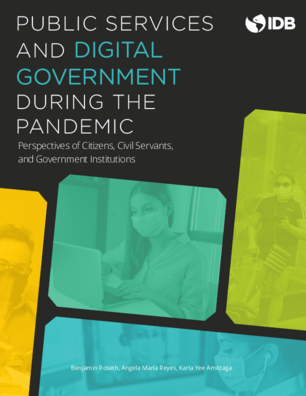Public Services and Digital Government during the Pandemic: Perspectives of Citizens, Civil Servants, and Government Institutions
Date
Mar 2021
The COVID-19 pandemic has restricted mobility and led to a sudden increase in the dependence on digital tools for providing and accessing public services, as well as for teleworking by public servants. Have government institutions in Latin America and the Caribbean been able to rise to this challenge, continue operating, and providing services? This report seeks to answer this question by providing new descriptive evidence gathered from three perspectives: citizens (based on surveys of more than 32,000 people across 13 countries), government officials (based on a survey of more than 4,600 officials in 9 countries), and public institutions (based on a questionnaire completed by 11 digital government lead agencies and 6 brief case studies). It finds that the crisis led many countries to digitize a significant range of services, sometimes in a matter of days. In addition, the proportion of citizens using the internet to access government transactions rose from 21 percent before the pandemic to 39 percent during it. Despite mobility restrictions, however, around 50 percent of citizens completed their last such transaction in person. With regard to teleworking in the public sector, almost half of all employees stated that they had been unable to perform critical tasks since the onset of the pandemic, many of which could have been resolved using digital governance tools. These findings point to the need to improve the availability and quality of digital services, as well as the feasibility of telework in government.




